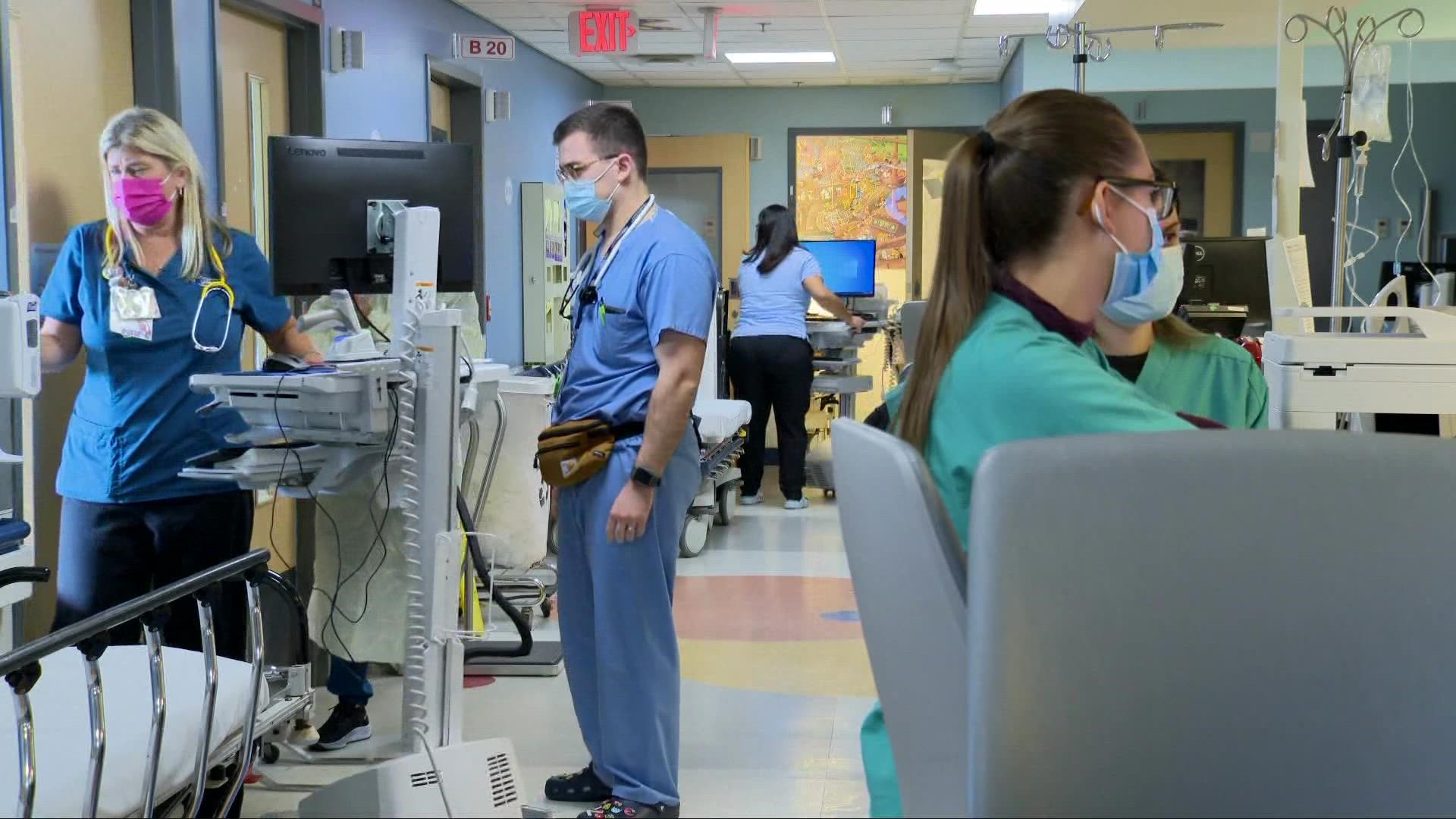CLEVELAND, Ohio — A new COVID-19 variant is taking over parts of the country. Northeast Ohio doctors say they're keeping a close eye out and bracing for a possible surge.
"The data that we do have does suggest that it's spreading quickly, more quickly than other variants," said Dr. Daniel Rhoads, head of microbiology at Cleveland Clinic.
Rhoads said while doctors are still waiting to learn more about variant XBB.1.5, early indicators show it's spreading fast, may be more contagious and is evading immunity more than other omicron variants.
According to CDC data, this new variant rose from 4% to 40% of new infections just in December and has caused about 75% of new cases in the Northeast part of the country.
"It looks like it will likely be able to bind with higher affinity to the ACE-2 receptor in the human to cause infection and also it is likely able to avoid the antibodies that most of us already have from vaccines and previous infections," Rhoads said.
Doctors said it's too early to tell if the variant is more deadly or causes more severe sickness, but the data they do have is already causing concern.
"Even if you've had COVID in the past and even if you've been vaccinated, there's a good chance that you could still catch this new variant," Rhoads said.
Dr. Amy Edwards, pediatric infectious disease specialist at University Hospitals Rainbow Babies & Children's Hospital, adds that the speed and timing of the new variant are most concerning.
"When we see a new variant like this it's concerning, because the timing is concerning," Edwards said. "A lot of hospital systems are pretty exhausted, we just did two really bad peaks from two really bad infections."
Edwards said RSV cases have significantly dropped and flu cases are starting to decline, but hospitals are bracing for a possible surge following the holidays that could be coupled with this new variant.
"All of the omicron variants don't seem to illicit very much immunity at all, literally we're seeing patients get sick weeks, two, three, four, weeks after having it before," Edwards said.
Both doctors shared the same advice -- some protection is better than none. They encouraged people to get vaccinated and boosted.
According to Ohio Department of Health Director Dr. Bruce Vanderhoff, while case counts, hospitalizations, and deaths from COVID have not reached levels seen over the past two winters, around 2,500 Americans and 90 Ohioans are dying each week.
In a release issued on Wednesday, Vanderhoff warned that those who are 65 and older – as well as those who are immunocompromised or have certain chronic conditions -- are at greater risk for serious illness or death if they have not received the updated booster, which targets the more recent omicron subvariants.
Data shows that almost four out of five (79% percent) Ohioans who have died of COVID have been 65 and older. While 86.9% of that population is fully vaccinated (1.77 million people), only 38% have the maximum protection of an updated booster (776,000).
“At the start of each new year, many of us resolve to take steps to improve our health, so I hope that more Ohioans will consider getting vaccinated or boosted,” Vanderhoff added. “That clearly is the safest, most reliable way you can reduce your risk of serious illness, hospitalization or even death as a result of the COVID-19 virus.”
You can search for COVID-19 vaccination locations at https://gettheshot.coronavirus.ohio.gov/.

